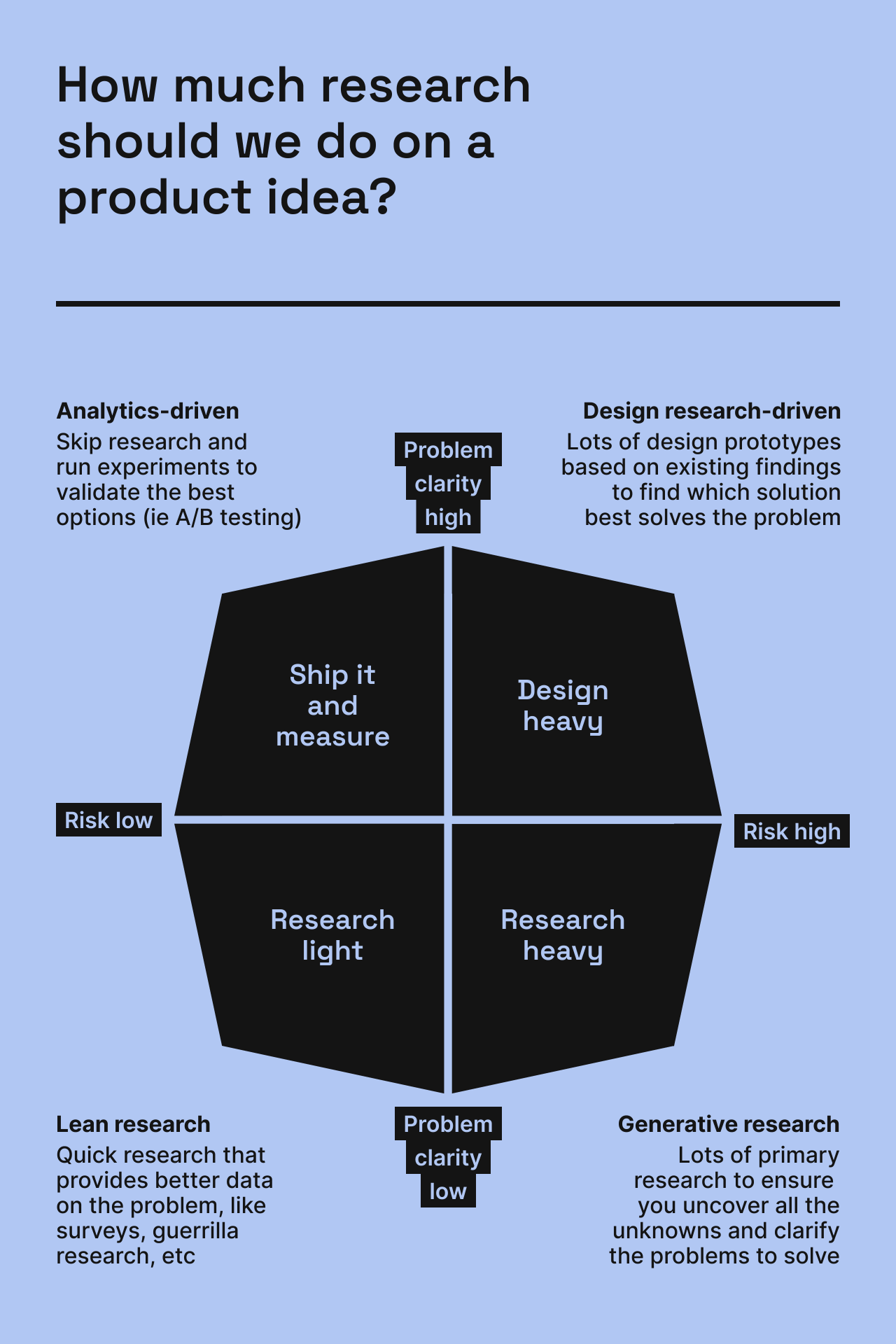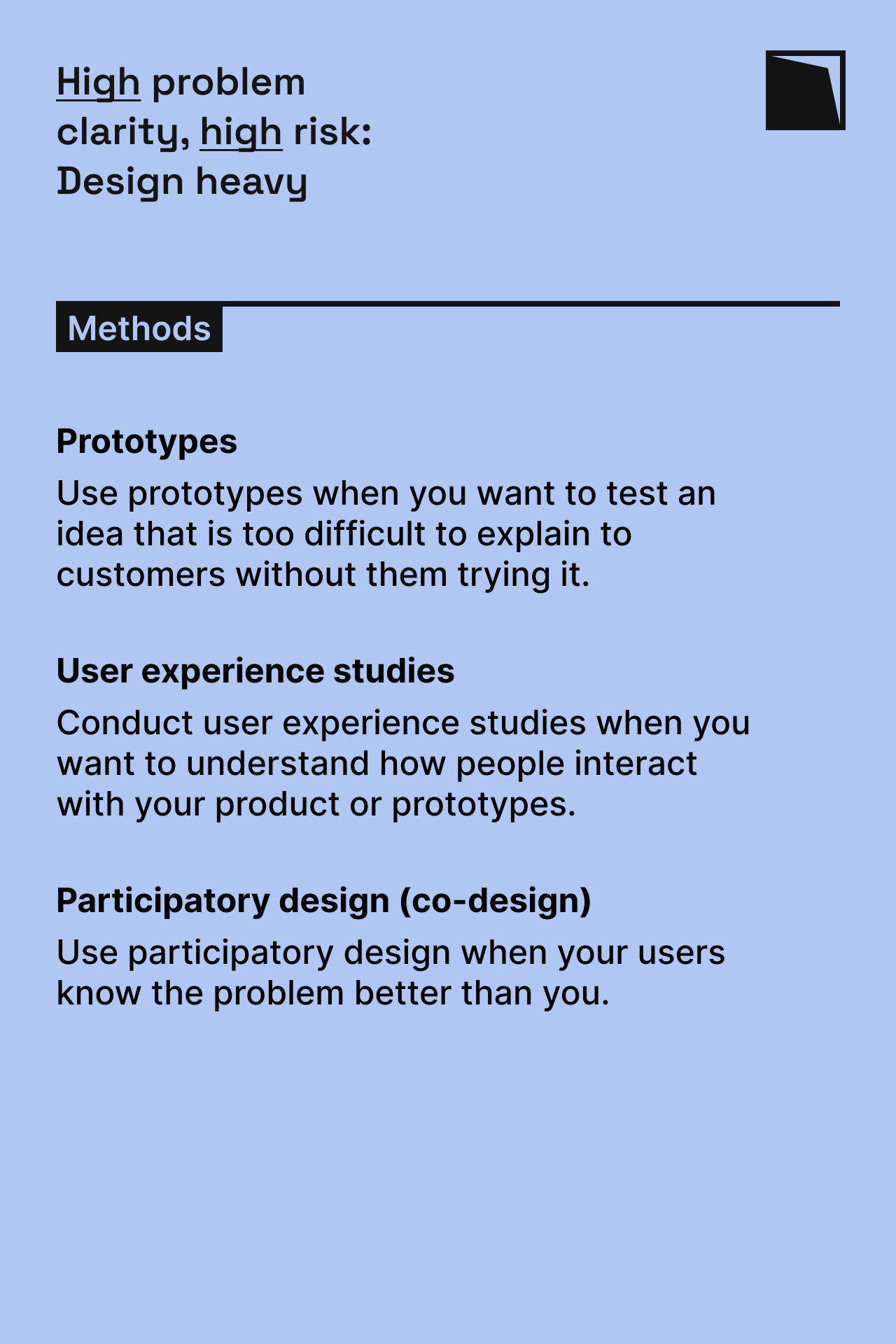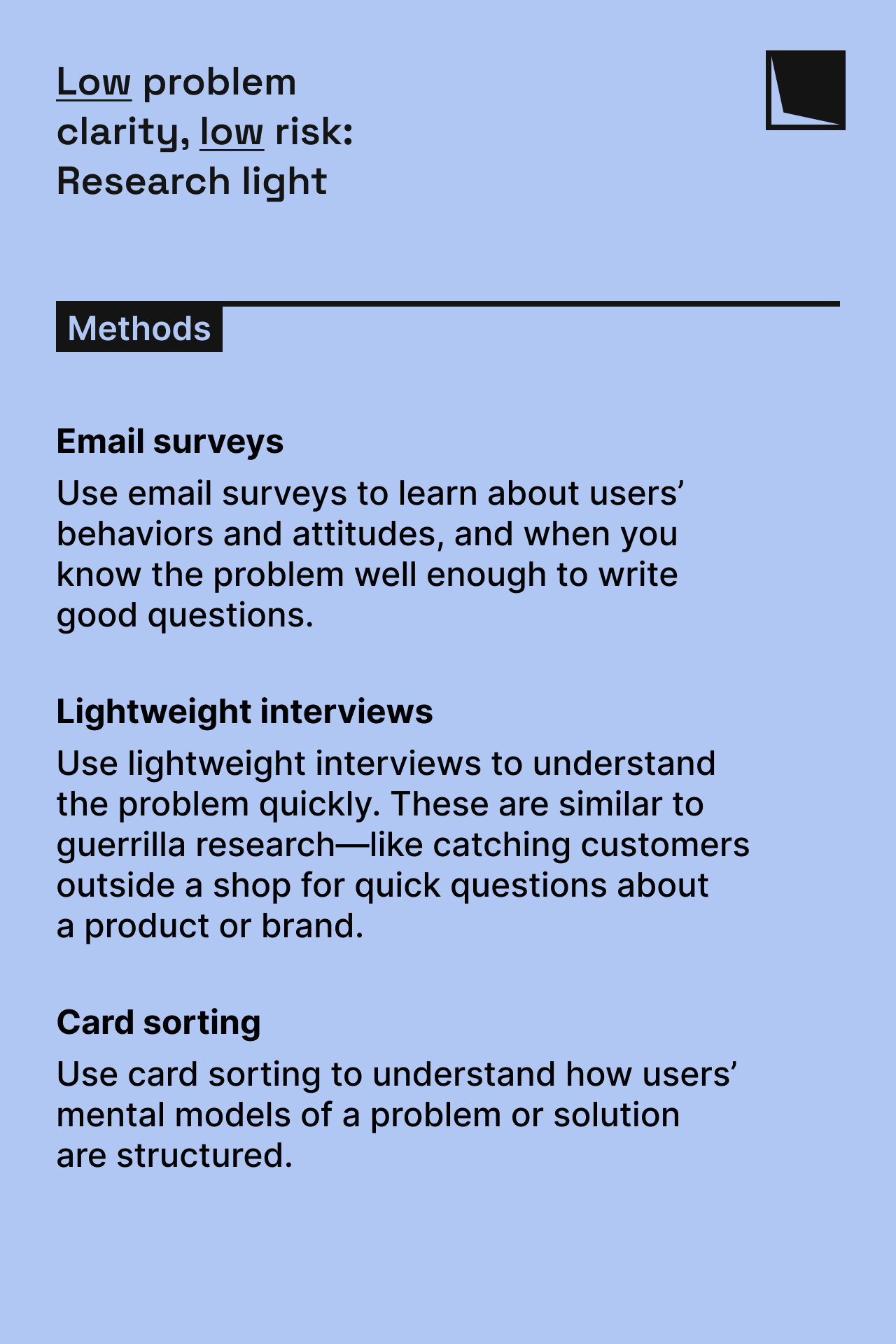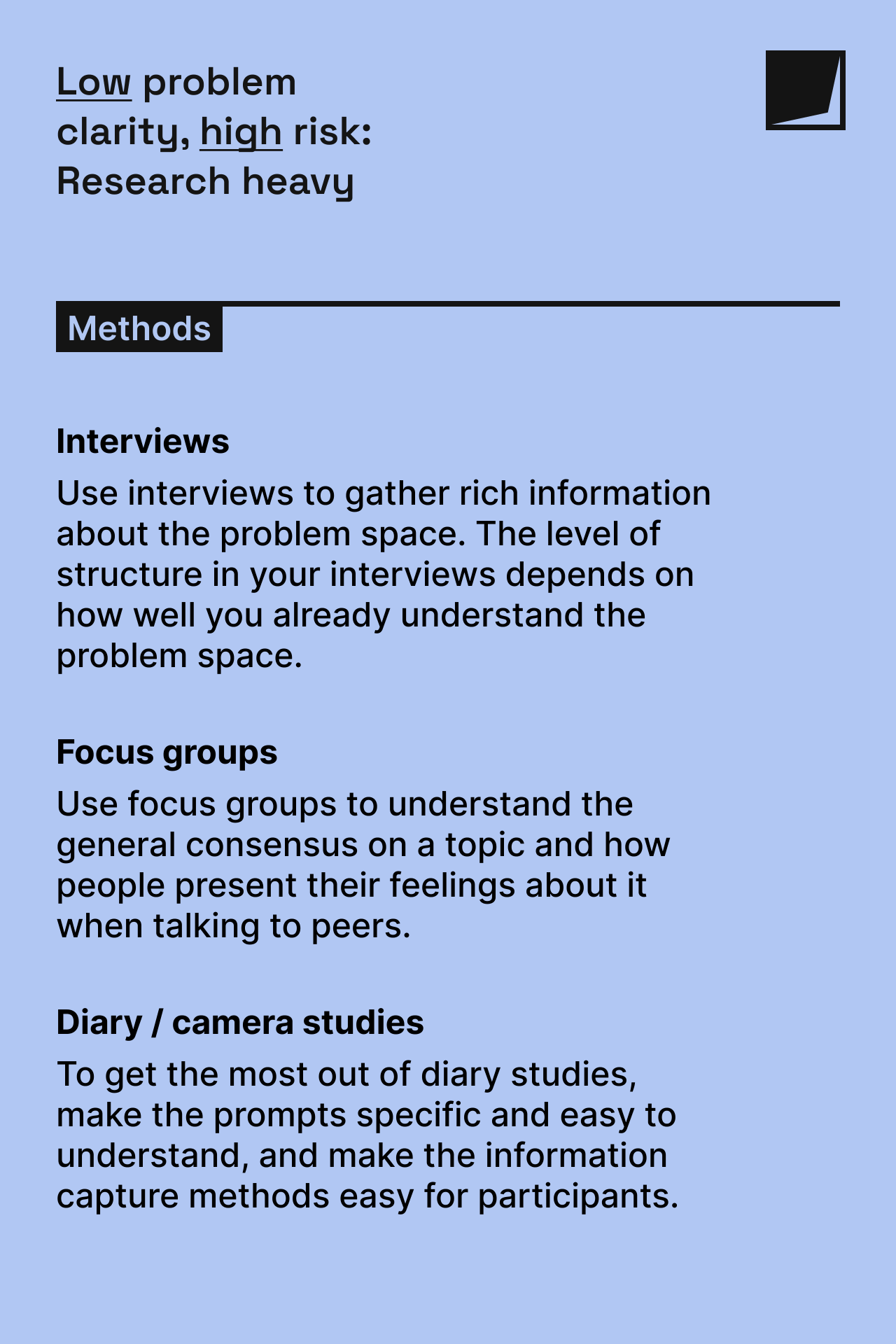The roadmap to success is paved with insights

Why did the PM cross the roadmap? To get to the other insight.
One for the PMs out there—your very own field guide for organizing, prioritizing, and using customer insights to build your product roadmap.
If you’re a Product Manager, you probably have the best intentions when building a product roadmap that is truly informed by user needs.
Solving real problems your users face and providing solutions for their unanswered needs is the likely path to meeting your overall goals. You already know that.
However, even with the best intentions, it’s sometimes challenging to know exactly how to use the customer data you’re getting from different sources—your UX research team, marketing, support or sales team, etc.
How do you prioritize insights? How do you know which type of feedback to act on first? What’s important, and what’s just noise? Creating a user-centered product roadmap isn’t about acting on every single insight from every source.
If you’ve tried that before, you’ve probably ended up harried and unsure about your direction. As a PM, you have to know how to employ user insights to serve your overall goals.
Let’s dive deep into exactly how to do that.
Why it’s hard to incorporate user insights in your roadmap
Before we get into how to organize and utilize insights about users, it’s important to get on the same page about what’s difficult in the first place. Then we can address these challenges one by one.
Your insights are often qualitative. It’s hard to know the extent to which they’re relevant to your user base
If you’re looking at quantitative user insights, such as statistically significant survey data or A/B testing results, it’s easier to understand how your findings are relevant to your users.
But when dealing with qualitative insights, like single bits of feedback from one or two customers, it’s not always clear how representative they are of your user base.





Some user insights may conflict with your KPIs or goals
It’s not uncommon that user insights address product issues or needs that don’t align with your team’s current focus.
For example, your company has a SaaS platform with an adjacent community feature. Your customer experience team may send feedback from key customers about how the community could be optimized to meet their collaboration needs. But perhaps for the next quarter, your team will be focusing on areas of the platform more associated with paid conversion.
Overall, you’ll work within the team goals—but what do you do with those insights? And how do you know when to come back to them?
User insights come from different teams with different perspectives, often all at once
It’s not uncommon for a PM at Lightricks to receive user research results from my team on a given topic. Then user feedback from our customer experience team. And then some information about how users are reacting to the same product iterations on social media—all at once.
In these cases, it’s up to the PMs to decide which insights are the most relevant and actionable. This isn’t always intuitive, especially because people whose roles involve user advocacy tend to develop strong feelings and want to impact the product accordingly (guilty as charged).
So how should PMs organize, prioritize, and utilize user insights given all the challenges?
Now I’m going to walk you through a method to ensure you’re using all of the insights that come your way as effectively as possible.
You’ll need to adjust each step to fit your organizational culture, but as you read, you’ll see that being intentional about insights instead of just reacting to them is the main path forward.
Step one: Create a space to organize and tag your insights by topic
If you use Dovetail like we do, you can organize your insights by relevant tags. This way, you can maintain an active list of all relevant insights per topic.
Here’s some advice I learned the hard way: make your tags as specific as possible.
For example, the tag product pain points may seem like a smart tag now, but your product team will likely address various user pain points at different times.
Continuing with the theme of pain points, I suggest creating a separate tag for each pain point that comes from any source of user insights. The general rule is to categorize your insights as specifically as possible to save time and frustration later.
Once you have a place, whether within Dovetail like us or somewhere else (perhaps a FigJam board if you’re using Figma), the key is to put the user insight in its spot, appropriately tagged, every time you’re given one.
Ensuring your insights are in the proper place and easily found when you need them means that you won’t risk forgetting or losing important insights when working on something relevant.
Moreover, this step allows you to cut out the noise. You have a space for all your insights. Now, you can browse and consider only the insights you need for whatever you’re currently working on at any given time.
Step two: Add additional tags for your company or team’s main KPIs
You’ve already started to organize your user insights by topic, which is probably pretty intuitive for you as a PM.
Here’s the thing: one of the constant pressures of the PM role is to ensure that whatever you choose to prioritize at any given moment is aligned with your team’s most important KPIs.
If you add KPI tags to your insights, you can ensure you don’t overlook opportunities to choose meaningful product iterations that can help you meet your goals.
For example, given that we have a plethora of photo and video editing apps, export rate is a main usage KPI at Lightricks. We figure that if a user exports a photo or video after editing it in one of our apps, we likely helped them create something they’re happy with.
So if our customer experience team were to alert us to a usability issue with our export screen, I may tag that as “pain point - export screen” and include another tag like “export rate KPI.”
When you get your quarterly goals and KPIs and need to plan your roadmap for the quarter, you can look at your past and recent insights related to that specific goal. You’ll find that you’ll remember opportunities to work on a particular metric you may have forgotten because it wasn’t relevant in the moment.
Step three: Create a habit of reviewing your insight tags weekly to look for new opportunities or relevant insights
Set a weekly reminder to look through all user insights—either by topic, KPIs, or both—and ensure you’re not neglecting any information about users that could be useful to you in the moment or in future planning.
The main point is that storing and tagging user insights is only the beginning. You have to review them regularly to ensure you’re incorporating relevant information about users in your work whenever possible.
Now you have a system for organizing user insights and sorting them by goals. What’s next?
Our system has addressed the noise of insights coming from different sources. If an insight conflicts with a KPI, it won’t appear on your screen when working toward that goal.
If your sales team and user researchers send you insights on different platforms, now you have it all in one place so that you can find it when you need it and never forget it.
Your answer to prioritizing insights at any given time is to sort insights by whatever goals or KPIs are driving your product work.
But how do you know what to do with qualitative insights from a small user group?
Differentiate between qualitative research with a representative sample vs. user feedback from a few users
If you have user researchers delivering insights based on proper research methodology, they should be based on representative samples of users.
When your researchers deliver insights and recommendations, they’ll let you know to what extent this applies to your overall user base or if it only applies to specific segments. From there, you can decide which insights and recommendations have the best shot at helping you meet your current goals.
It’s more complicated when it comes to things like feedback from a sales or support team.
For example, an account manager may tell you one of your organization’s biggest clients requested a specific feature. That’s great information, but you’ll have to do more sleuthing before figuring out to what extent this feedback deserves your focus.
Here are some questions to ask yourself (or your colleagues) about user insights that come from relatively few instead of a representative sample:
What were the problems or needs behind the request or feedback? Based on what you know about your user base, do these problems or needs apply to other segments of users?
What goals or KPIs does this feedback relate to? Could addressing the crux of this insight help you meet them?
Does this feedback correlate at all with any of the feedback we’ve seen in the past?
Once you’ve answered these questions, you should have a better idea of whether or not it’s relevant or helpful.
The trick with less scientific feedback is to combine it with internal knowledge about users and determine if it’s helpful or not.
Tip: beware of the self-selecting nature of user feedback (as opposed to user research). For example, it could be that 70 percent of last week’s support tickets were requests for a specific feature—that’s compelling!
But users who write to support to request features are a self-selecting group. You don’t know who used your product and didn’t write to support because they didn’t think it was worth the effort or because your current feature set met their needs.
Take these types of feedback stats and ask the same questions we listed above to ensure you’re looking at it with a 360 perspective before making any product decisions.
A user-centered roadmap doesn’t mean reacting to every user insight immediately
As a PM, your job is to ensure your customer insights are categorized by goal and topic so that you never miss an opportunity to serve your user base and help your organization meet its most important goals.
In practice, this means having a goal-first mindset. Use insights when they help move you toward overall goals, and review them periodically to ensure you aren’t missing anything.
Various teams at your organization will give you relevant insights that aren’t immediately actionable. With your new system for organizing user information, you can save it for later.
Overall, a user-centered roadmap isn’t a series of reactions to everything you learn about your users. A user-centered roadmap results from a product manager integrating insights selectively and intelligently based on their goals and KPIs.
Subscribe to Outlier
Juicy, inspiring content for product-obsessed people. Brought to you by Dovetail.